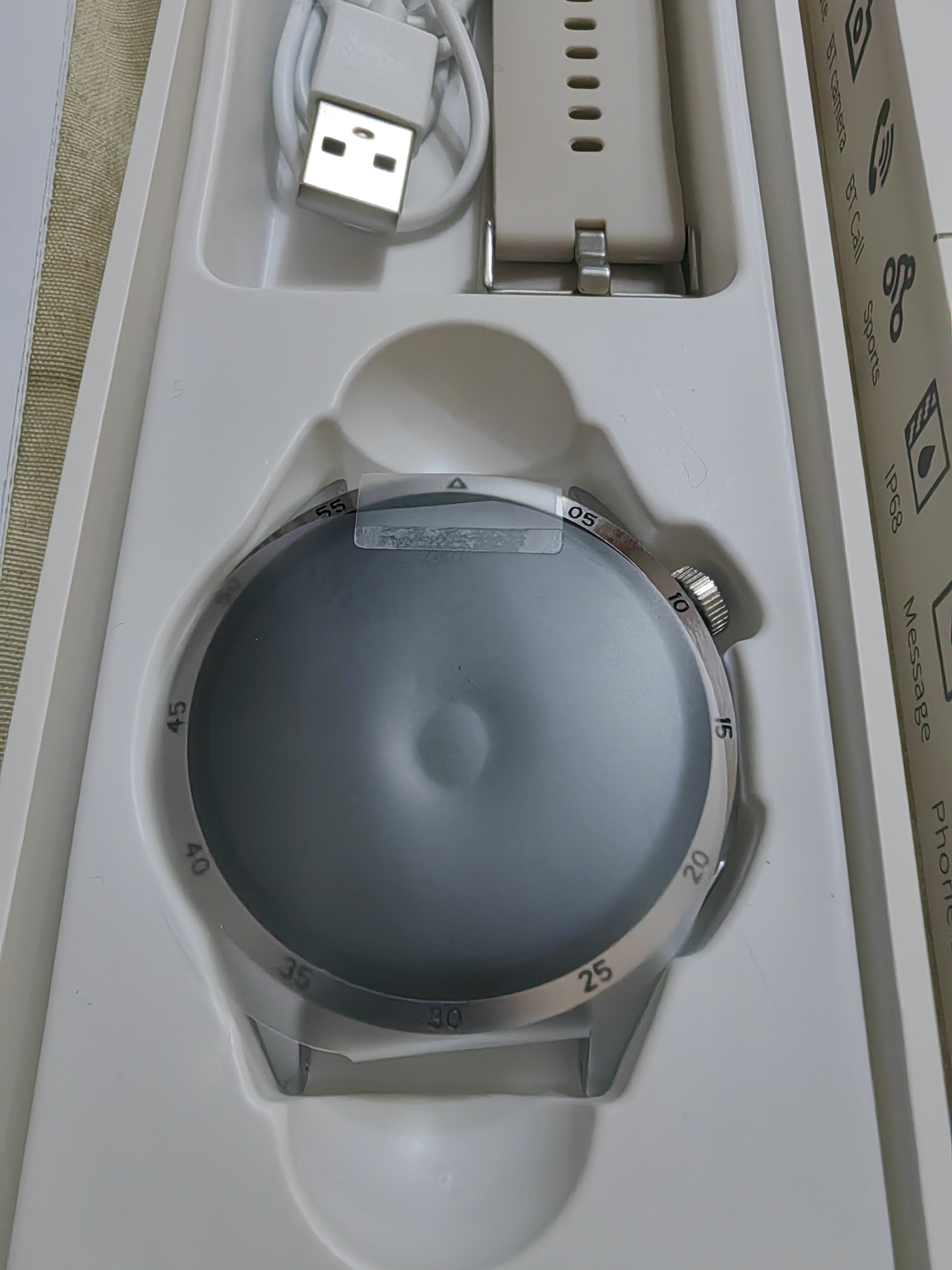Key Highlights:
Bitcoin (BTC):
Current Price: Around $94,200.
Daily Change: -3.86%, reflecting profit-taking and ETF outflows of $684 million.
Weekly Trend: +3.19%, signaling medium-term bullishness despite short-term corrections. Bitcoin remains supported by growing corporate interest, such as Rumble's $20 million allocation to BTC.
Ethereum (ETH):
Current Price: Approximately $3,420.
Daily Change: +1.22%.
Weekly Trend: +8.72%, driven by increasing adoption of layer-2 scaling solutions like Optimism and zkSync, boosting DeFi activities and transaction efficiency.
Altcoin Performance:
Polkadot (DOT): Weekly gain of +37.73%, despite a 6.5% daily drop, likely due to protocol updates and parachain growth.
Solana (SOL): Down by 6.7% daily and 1.68% weekly, affected by network issues and competitive pressures.
Ripple (XRP): Weekly surge of 27.38%, benefiting from positive legal developments.
Market Trends:
Winners: Lido DAO (+7.96%), Arbitrum (+7.43%), and Aave (+5.54%) are top performers, reflecting strong interest in DeFi and Ethereum-linked ecosystems.
Losers: Metaverse projects like The Sandbox and Decentraland saw significant losses, indicating cooling interest in this niche.
Regulatory and Institutional Developments:
Stablecoin regulations and growing transparency are expected to enhance investor confidence.
Institutional investments, particularly through ETFs, are stabilizing the market and reducing volatility.
Overall, the market remains volatile but shows pockets of growth, particularly in Ethereum-related projects and institutional adoption. Investors are advised to watch for updates on regulatory changes and ETF fund flows, which could significantly impact market dynamics. For more detailed insights, visit sources such as ***** ytics Insight, Coingape, and Bluebit blogs
A mariner can understand that a ship is dragging its anchor by noticing several signs:
Change in Position: The most obvious sign is the ship's position shifting, especially if the vessel moves significantly from its original anchorage. The mariner can observe this visually (if the horizon or landmarks change), or through onboard GPS systems and charts.
Anchor Alarm: Modern vessels often have an anchor alarm system, which will trigger if the ship drifts beyond a preset distance from the anchor point.
Change in Depth: The depth of water measured by the ship’s depth sounder may change unexpectedly, indicating that the anchor is no longer holding and the vessel is drifting into deeper waters.
Wind or Current: A sudden change in wind direction or current might cause the anchor to drag, especially if the anchor wasn't set properly or if the sea conditions change dramatically.
Anchor Chain Movement: Observing the slack in the anchor chain or windlass can also indicate the anchor is dragging. If the chain becomes tight and there’s no significant movement of the vessel, it could be an indication that the anchor is dragging.
Steps to Take if the Anchor is Dragging:
Alert the Crew: The first step is to inform the ship’s crew and captain to **** s the situation and plan the next steps.
Check the Anchor and Scope: Confirm that the anchor is properly set and the scope (length of anchor chain relative to depth) is sufficient for the current conditions.
Increase Power: The mariner should use the engine to carefully regain control of the vessel. This helps to steady the ship and avoid further drift.
Re-anchor or Move to Safer Area: If the anchor continues to drag, the ship may need to weigh anchor and reposition. The vessel should move to a safer location, possibly deeper water, to re-anchor or try a different anchoring method.
Monitor Position: Once the anchor is set again, continuously monitor the vessel’s position using GPS or visual references, and ensure the anchor is holding securely.
In general, the priority is to prevent the ship from drifting into hazards such as shallow waters, other vessels, or shorelines, while ensuring crew safety.
https://www.ukpandi.com/ne...

Dragging Anchor and Maritime Accidents
This report outlines an example of an accident caused by dragging anchor and an examination of possible ways to prevent a ship from dragging its anchors.
https://www.ukpandi.com/news-and-resources/articles/2021/dragging-anchor-and-maritime-accidents/1. Switch to Cleaner Fuels
Low-Sulfur Fuels: The International Maritime Organization (IMO) has implemented regulations to reduce sulfur emissions. Ships can use low-sulfur fuels (like Very Low Sulfur Fuel Oil - VLSFO) instead of traditional high-sulfur bunker fuel.
Liquefied Natural Gas (LNG): LNG is a cleaner alternative to conventional marine fuels as it significantly reduces emissions of CO2, sulfur oxides (SOx), and nitrogen oxides (NOx).
Biofuels: Some ships are beginning to use biofuels made from renewable sources like algae, waste oils, or plant-based materials, which have a lower carbon footprint.
Ammonia and Hydrogen: Though still in the experimental stage, ammonia and hydrogen have the potential to be carbon-free fuels when produced from renewable sources.
2. Energy Efficiency Measures
Hull Design & Maintenance: Modern hull designs, such as those with smoother surfaces and more hydrodynamic shapes, can reduce drag and fuel consumption. Regular cleaning and maintenance of the hull can also help maintain fuel efficiency.
Energy-saving Devices (ESDs): These include air bubble systems, ducts, and fins that improve the flow of water around the ship, reducing resistance and energy consumption.
Wind Propulsion Technologies: Technologies like sails, kite sails, and rotor sails harness wind energy to reduce the reliance on engines and reduce fuel consumption.
Energy-Efficient Engines: Newer, more efficient engines consume less fuel and emit fewer pollutants. Engine tuning, regular maintenance, and using low-load engines (engines optimized for slower speeds) can also improve energy efficiency.
3. Use of Scrubbers and Exhaust Gas Cleaning Systems
Scrubbers: These are devices installed on the exhaust stacks to remove sulfur oxides (SOx) and other pollutants from ship emissions. Scrubbers can clean exhaust gases, allowing ships to burn higher sulfur content fuel while meeting emission regulations.
Exhaust Gas Recirculation (EGR): EGR systems reduce NOx emissions by recirculating part of the exhaust back into the combustion chamber, reducing the formation of NOx during combustion.
4. Operational Efficiency and Best Practices
Slow Steaming: Reducing the speed of a ship, a practice known as slow steaming, reduces fuel consumption and emissions. Lower speeds also decrease the energy required to overcome hydrodynamic resistance.
Weather Routing: Using weather data and forecasting tools to optimize a ship's route can reduce fuel consumption and emissions by avoiding adverse weather conditions (e.g., headwinds) and taking advantage of favorable currents.
Port Time Optimization: Efficient port operations, such as reducing the time ships spend waiting at ports or idling, can also lower emissions. Strategies like cold ironing (using shore power while docked) allow ships to turn off engines while in port, reducing the use of auxiliary engines that produce emissions.
5. Carbon Capture and Storage (CCS)
Though still in the early stages, the concept of carbon capture and storage for ships involves capturing CO2 emissions from the exhaust gases and storing them safely, preventing their release into the atmosphere. This is still an emerging technology for the maritime industry.
6. Alternative Propulsion Technologies
Electric Propulsion: The use of batteries or fuel cells for electric propulsion is gaining attention, especially for short-sea shipping and ferries. These vessels rely on electricity stored in batteries or generated on board through renewable energy sources.
Hybrid Systems: Hybrid propulsion systems combine traditional internal combustion engines with batteries or fuel cells, allowing for reduced emissions during certain parts of the voyage (e.g., port entry, and docking).
7. Compliance with International Regulations
IMO 2020 Regulation: The International Maritime Organization (IMO) introduced the IMO 2020 sulfur cap, which limits the sulfur content in marine fuels to 0.5% globally (down from 3.5%). This has encouraged the use of low-sulfur fuels or the installation of scrubbers.
IMO’s GHG Strategy: The IMO has set a goal to reduce greenhouse gas emissions from shipping by at least 50% by 2050 (compared to 2008 levels). This includes measures such as reducing carbon intensity (CO2 per ton-mile) and encouraging the use of zero-emission fuels.
8. Research and Development of Innovative Technologies
Investment in R&D for new technologies, including carbon-neutral fuels, improved propulsion systems, and advanced emissions abatement technologies, will be essential to achieving long-term reductions in ship emissions.
Collaborative efforts between shipping companies, fuel suppliers, technology providers, and regulatory bodies can speed up the development of these innovations.
Reducing ship emissions involves a combination of technological advancements, operational efficiencies, and the use of cleaner fuels. The maritime industry is increasingly moving toward a sustainable future, driven by stricter environmental regulations and the growing demand for environmentally responsible practices. By adopting these strategies, the shipping industry can significantly reduce its environmental footprint and contribute to global efforts in tackling climate change.
https://www.goltens.com/pr...
If you suspect someone is having a heart attack, acting quickly is critical to saving their life. Here's a step-by-step guide on what to do in case of a heart attack:
1. Call Emergency Services Immediately (911 or your local emergency number)
Time is critical during a heart attack. The sooner medical help arrives, the better the chances of survival and reducing damage to the heart.
Make sure you provide the operator with clear details: the person’s symptoms, age, and condition. If possible, have someone else call while you ****** ist the victim.
2. Help the Person Stay Calm and Rest
Encourage the person to sit down and stay calm. Reassure them that help is on the way.
Avoid exertion, as physical activity can worsen the heart attack.
3. Chew Aspirin (If the Person is Not Allergic)
Give the person aspirin if they are conscious and not allergic to it. Aspirin helps thin the blood and can reduce the severity of a heart attack.
Dosage: A typical dose is 325 mg (one regular aspirin or four 81 mg baby aspirin). Let the person chew it slowly rather than swallowing it whole, as this speeds absorption.
4. Perform CPR if the Person Becomes Unconscious
If the person loses consciousness and is not breathing, start CPR immediately.
Chest Compressions: Place your hands in the center of the chest and push down hard and fast (about 2 inches deep at a rate of 100-120 compressions per minute).
If you're trained, provide rescue breaths after every 30 compressions (mouth-to-mouth or using a face shield if available).
If you're untrained or unsure, just perform hands-only CPR (chest compressions) until help arrives.
5. Use an AED if Available
If there’s an automated external defibrillator (AED) nearby, turn it on and follow the instructions. It can deliver a shock to restore a normal heart rhythm if necessary.
6. Monitor the Person’s Condition
Stay with the person, keep them as calm as possible, and continue to monitor their breathing and heart rate until medical help arrives.
Key Symptoms of a Heart Attack to Watch For:
Chest pain or discomfort (often a feeling of pressure, tightness, or squeezing)
Pain in the upper body (arms, back, neck, jaw, or stomach)
Shortness of breath
Nausea or lightheadedness
Cold sweat or dizziness
Remember that time is muscle: The quicker medical help is received, the better the outcome. Immediate action can prevent heart muscle damage and save lives.
изпращам по куриер с опция за преглед и тест
цена 99лв
08976936450
On October 28, 2023, the Maritime and Port Authority of Singapore (MPA) reported that 5 tonnes of oil had spilled into the sea off the coast of Changi, a region located on the eastern side of Singapore's main island. The MPA confirmed that the overflow has ceased, meaning the source of the spill was contained and no further oil was being released. While the precise details of the incident are still under investigation, here’s an overview of what likely happened, potential parties that could be responsible, and the environmental impacts of such a spill:
What Likely Happened:
The oil spill occurred in Singapore’s busy waters near Changi, which is a significant location for shipping and port activities.
The spill was reported to involve 5 tonnes of oil, a relatively small but still concerning amount, especially in a delicate marine environment like Singapore's.
The source of the spill could have been a maritime accident, such as a collision between ships, a leak from a vessel's fuel tank, or a malfunction in an oil storage or transport system.
The MPA stated that the overflow ceased, which typically means that whatever caused the spill (such as a leak or accident) was shut off or contained before more oil could be released into the water.
Who is Likely Guilty?
Determining guilt in such cases usually depends on an investigation by local authorities (MPA, police, or environmental agencies), but potential parties that could be held responsible include:
Shipping Companies or Operators:
If the spill was caused by a ship collision or a faulty fuel line, the company responsible for the ship or vessel involved could be found guilty. This could include:
Negligence in maintenance: If the ship’s operators didn’t properly maintain equipment or manage fuel systems.
Navigational errors: If a ship caused the spill due to a mistake in navigation or collision with another vessel or structure.
Failure to follow safety procedures: If safety protocols for handling or transferring oil were not followed.
Port Facilities or Oil Operators:
If the spill occurred during oil transfer operations at the port, facilities managing oil storage or cargo handling could be held responsible for not properly securing tanks or pipelines, leading to a spill.
Human Error or Mechanical Failure:
In some cases, spills are the result of a combination of human error or equipment malfunction, such as a failure to properly shut off valves during an operation or faulty equipment that causes an overflow.
Given that Singapore has stringent regulations governing oil spills and maritime operations, the investigation will likely focus on identifying whether there was negligence or non-compliance with environmental and safety regulations.
Impact on the Environment:
Marine Life and Ecosystems:
Even though 5 tonnes may sound small in comparison to large-scale spills, it can still have a significant impact on marine life, especially in a sensitive area like Changi. The spill could affect local fish, coral reefs, marine birds, and mollusks.
Oil is toxic to marine organisms. It can contaminate food sources, coat the feathers of birds and the fur of marine mammals, and poison fish and other sea creatures through ingestion and absorption.
Smothering: Oil slicks can cover and suffocate the marine plants and animals that are vital to the food chain. Coral reefs, in particular, are highly sensitive to oil contamination and can be severely damaged, leading to long-term ecological damage.
Water Quality:
The oil could degrade water quality, making it unsafe for both marine life and humans. It could lead to long-lasting contamination of the marine ecosystem, especially if the oil reaches shorelines or beaches.
Air Pollution:
In some cases, when oil is not properly cleaned up or contained, it can evaporate and release toxic fumes, leading to air pollution around the affected area.
Cleanup Challenges:
The spill will require extensive cleanup operations. While the MPA has not reported the full scope of the efforts, cleaning up even a small spill like this can be difficult and costly. Oil slicks are challenging to remove, and they often require specialized equipment and techniques, such as booms (floating barriers), skimmers (to remove oil from the water’s surface), and dispersants (chemical agents that break down the oil).
The effectiveness of the cleanup efforts will depend on weather conditions, the spread of the oil, and the speed at which the oil is contained.
Long-Term Environmental Consequences:
Persistent contamination of the marine environment, such as damage to coral reefs or mangrove ecosystems, could have long-lasting effects on local biodiversity.
While some marine species can recover from oil contamination, the recovery time can take years, and the damage to ecosystem services (e.g., fisheries, tourism) can have economic implications for the region.
Next Steps and Consequences:
Investigation:
The MPA and other authorities will likely conduct an investigation to determine the exact cause of the spill, who is responsible, and the extent of the damage. If negligence is found, penalties may be imposed, including fines or compensation for the cleanup costs.
Legal Action:
If a party is found to be at fault, they could face legal action, including fines or lawsuits for violating environmental protection laws or failing to adhere to safety regulations.
Preventative Measures:
This incident may prompt stricter regulations or safety measures for oil-handling procedures in the area, especially for maritime operations around Singapore’s busy port. It could also lead to increased monitoring of ships and oil terminals.
Conclusion:
While the 5-tonne oil spill off Changi on October 28, 2023, might seem small, it still poses serious risks to the environment, especially to marine ecosystems in the region. The investigation will determine who is at fault, and depending on the findings, the responsible parties could face legal or financial penalties. The spill’s impact on local marine life and water quality will likely prompt an ongoing cleanup effort to mitigate environmental damage.
https://www.theonlinecitiz...
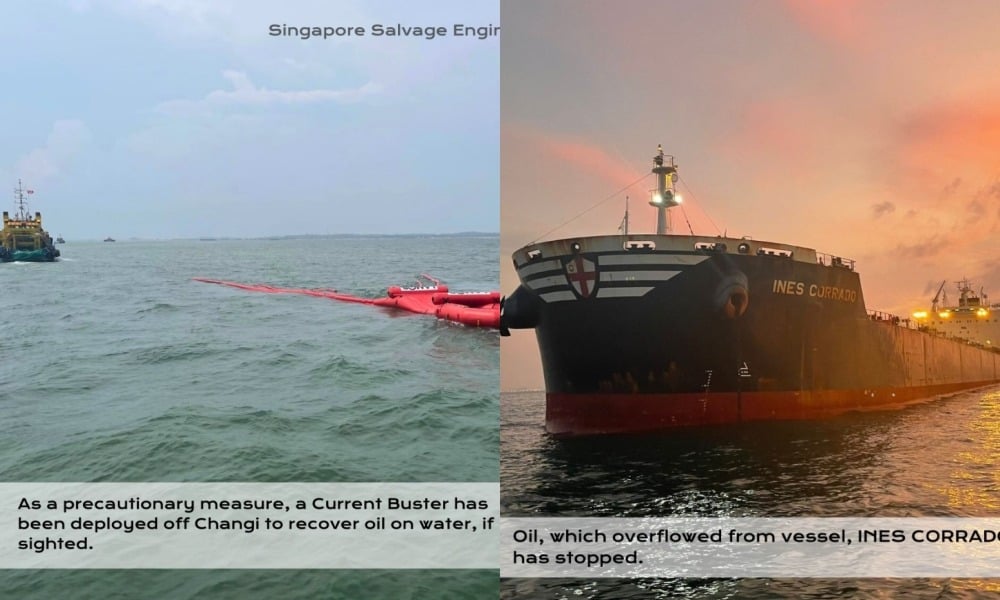
MPA reports 5 tonnes of oil spilled off Changi on 28 Oct; Overflow has ceased - The Online Citizen
The Maritime and Port Authority of Singapore (MPA) updated on the oil spill incident off Changi at 5.40pm on 28 October. During a bunkering operation with the Bahamas-flagged bulk carrier INES CORRADO, around five tonnes of oil overflowed into the sea. As of 8am on 29 October, no oil was spotted, an..
https://www.theonlinecitizen.com/2024/10/29/mpa-reports-5-tonnes-of-oil-spilled-off-changi-on-28-oct-overflow-has-ceased/https://www.youtube.com/wa...
Risk of drugs muggling in Colombia still remains very high. Preventive measures in Colombian ports - hull inspections , sniffing dogs searches and hiring extra watchmen or cctv.
https://www.skuld.com/topi...

Colombia: Drug smuggling prevention report 2024 - Skuld
Skuld’s correspondent, A&A Multiprime, has recently published an updated report on drug smuggling in Colombian ports. The report provides valuable information on emerging practices and necessary precautions, along with relevant recommendations and countermeasures.
https://www.skuld.com/topics/port/port-news/america/colombia-drug-smuggling-prevention-report-2024/In the event of a ship collision at sea, follow these steps to ensure safety and manage the situation effectively:
Assess the Situation:
Determine the extent of damage and the condition of the vessel and crew.
Check for immediate threats such as fire or flooding.
Alert the Crew:
Sound the general alarm to alert the crew and initiate emergency procedures.
Assign specific roles and responsibilities to crew members, such as damage control, evacuation, or communication.
Communicate:
Use the ship’s communication systems to notify nearby vessels and the appropriate maritime authorities, such as the coast guard or rescue services.
Provide details about the incident, location, and the extent of the damage.
Stabilize the Vessel:
If possible, take measures to stabilize the vessel, such as closing watertight doors or using pumps to manage flooding.
Adjust the ship’s course and speed to reduce the risk of further damage or instability.
Prepare for Evacuation:
If the situation is severe and the vessel is at risk of sinking, prepare for evacuation.
Deploy lifeboats, life rafts, and other survival equipment according to the emergency plan.
Ensure that all crew and passengers are accounted for and know how to use the safety equipment.
Conduct Damage Control:
Implement damage control procedures to minimize further damage and manage any leaks or breaches.
Follow established protocols for handling fires, flooding, and other emergencies.
Document the Incident:
Record the details of the collision, including the time, position, and circumstances of the incident.
Collect witness statements and evidence for later investigation and reporting.
Follow Up:
Once the immediate danger has passed, conduct a thorough ***** sment of the damage and the ship’s condition.
Cooperate with investigators and authorities to understand the cause of the collision and prevent future incidents.
Taking these steps will help manage the immediate aftermath of a ship collision and ensure the safety of everyone on board.
In case of nuclear contamination, follow these steps to protect yourself and others:
Get to Safety:
Move indoors and seek shelter in a sturdy building if you're outside.
Stay away from windows and doors, as they might not provide adequate protection.
Minimize Exposure:
Stay inside and limit your exposure to outside air.
If you are indoors, seal windows, doors, and vents with tape or other materials to reduce contamination.
Decontaminate:
Remove contaminated clothing and seal it in a plastic bag.
Take a thorough shower with soap and water to wash off any radioactive particles.
Avoid using conditioner or lotion until decontamination is complete, as these can bind radioactive particles to your skin.
Stay Informed:
Listen to emergency broadcasts or follow official instructions from local authorities regarding safety measures, evacuation orders, and radiation levels.
Avoid Consuming Contaminated Food and Water:
Do not eat or drink anything that might be contaminated. Use stored or sealed food and water supplies if available.
Seek Medical Attention:
If you experience symptoms of radiation sickness (such as nausea, vomiting, or fatigue), seek medical attention immediately.
Follow the advice of medical professionals and emergency responders.
Follow Government Instructions:
Comply with any evacuation orders or other directives issued by emergency management authorities. They will provide guidance on when it is safe to return to your home and how to manage long-term exposure risks.
Taking these actions will help protect you from the immediate effects of nuclear contamination and aid in recovery and safety.
To prepare a ship for winter conditions and prevent icing, follow these steps:
Inspect and Maintain Equipment:
Ensure that heating systems for critical machinery and living spaces are functioning properly.
Check and maintain anti-icing and de-icing systems, such as heaters for the water intakes and ventilation systems.
Protect the Hull:
Apply anti-fouling and anti-icing coatings to the hull to reduce ice buildup and protect against corrosion.
Secure and Insulate:
Insulate exposed pipes and equipment to prevent freezing.
Ensure that all cargo is securely stowed to prevent shifting and potential damage.
Monitor Weather Conditions:
Stay updated with weather forecasts and ice warnings to plan your route and avoid areas with heavy ice.
Stock Supplies:
Keep extra supplies of de-icing agents, antifreeze, and other necessary materials onboard.
Ensure that you have adequate provisions for crew and emergency supplies.
Crew Training:
Train the crew on winter operations and emergency procedures related to icing and cold weather.
Regular Drills and Inspections:
Conduct regular drills to ensure the crew is prepared for ice-related emergencies.
Perform routine inspections to identify and address potential issues before they become serious problems.
Taking these precautions will help safeguard the ship from the challenges posed by winter conditions and minimize the risk of icing.
Recognizing insufficient stability in a ship, particularly related to a small GM (metacentric height), involves observing various symptoms and indicators. Here are key signs to watch for:
Excessive Rolling: If the ship exhibits excessive rolling or a slow return to an upright position after a roll, it may indicate insufficient stability. A small GM results in a less effective restoring force.
Difficulty in Handling: The ship may become difficult to handle or maneuver, especially in rough seas, because of poor stability.
Shifting Cargo: If cargo or equipment shifts noticeably while underway, it might suggest inadequate stability. Properly balanced cargo is essential for maintaining stability.
Increased Draft Changes: Significant changes in draft or trim while the ship is operating can indicate stability issues.
Poor Performance in Weather: The ship may struggle more than usual in adverse weather conditions, exhibiting excessive rolling or pitching.
Deck Wetness: Excessive water on deck, particularly on one side, can indicate poor stability.
Difficulty with Stability Calculations: If stability calculations frequently show marginal or insufficient stability, it suggests a small GM or other stability issues.
Crew Feedback: Crew members might report unusual behavior of the vessel or difficulties in normal operations, which can be a sign of stability issues.
If any of these symptoms are observed, it’s essential to take corrective actions immediately, such as redistributing weight, adjusting ballast, or seeking advice from a marine surveyor or stability expert to ensure the safety and stability of the ship.
In case of a tropical storm, a master of an ocean ship should take the following steps:
Monitor Weather Updates: Continuously track weather forecasts and storm progress through satellite, radio, or other reliable sources.
Review Emergency Procedures: Ensure that the crew is familiar with emergency protocols and that all safety equipment is operational and easily accessible.
Adjust Course: If possible, alter the ship's course to avoid the storm. Follow recommendations from weather services or maritime authorities.
Secure the Ship: Ensure all cargo and equipment are secured to prevent movement that could affect stability.
Prepare for Rough Seas: Increase watchfulness for potential hazards, such as large waves or high winds, and ensure that all safety gear is in place.
Communicate: Maintain regular communication with maritime authorities and other vessels in the vicinity for updates and advice.
Safety Briefing: Conduct a safety briefing with the crew, emphasizing the importance of wearing life jackets and other safety measures.
Prepare for Heavy Weather: Make sure the vessel is ready for heavy weather conditions by checking the bilge pumps, ensuring watertight doors are secure, and preparing for potential flooding.
Following these steps can help ensure the safety of the vessel and its crew during a tropical storm.
Here's a list of different types of ships, along with descriptions of their functions. I can generate an image to showcase these ships together:
1. Container Ship
Function: These ships are designed to carry standardized cargo containers, which can easily be loaded, unloaded, and stacked. They are the backbone of global trade, transporting goods across the world.
2. Bulk Carrier
Function: Bulk carriers are used to transport large quantities of unpackaged bulk cargo, such as grains, coal, ore, and cement. They have large cargo holds to accommodate loose materials.
3. Tanker
Function: Tankers are designed to carry liquid cargo, such as crude oil, chemicals, or liquefied natural gas (LNG). They have specialized tanks to safely transport hazardous or volatile liquids.
4. Ro-Ro Ship (Roll-On/Roll-Off)
Function: Ro-Ro ships are designed to carry wheeled cargo, such as cars, trucks, trailers, and railroad cars. Vehicles are driven on and off the ship using ramps, making loading and unloading efficient.
5. Passenger Ship (Cruise Ship)
Function: Passenger ships, including cruise ships, are designed to transport people rather than cargo. Cruise ships offer luxury amenities and travel to tourist destinations, while ferries provide shorter trips.
6. Naval Ship
Function: Naval ships are military vessels designed for warfare, patrolling, and defense. Types include aircraft carriers, destroyers, frigates, submarines, and patrol boats.
7. Fishing Vessel
Function: Fishing vessels are used for catching fish and other seafood. They vary in size from small boats to large trawlers that can operate in deep waters.
8. Research Vessel
Function: Research vessels are equipped with scientific equipment to conduct marine research. They are used for studying oceanography, marine biology, and environmental conditions.
9. LNG Carrier
Function: LNG carriers are specialized ships designed to transport liquefied natural gas. They have insulated tanks to keep the gas at very low temperatures during transport.
10. Dredger
Function: Dredgers are used to remove sediment, sand, and debris from the bottom of rivers, harbors, and other bodies of water. They help maintain waterways and create new land.
11. Icebreaker
Function: Icebreakers are designed to navigate through ice-covered waters, clearing paths for other ships. They are equipped with reinforced hulls to break through thick ice.
12. Yacht
Function: Yachts are private luxury vessels used for leisure and recreation. They range from small sailing yachts to large motor yachts with opulent accommodations.
13. Barge
Function: Barges are flat-bottomed vessels used to transport goods, typically on rivers and canals. They are often towed or pushed by tugboats and are ideal for transporting heavy cargo.
14. Ferry
Function: Ferries transport passengers, vehicles, and cargo across bodies of water. They operate on fixed routes, providing a critical link between islands and mainland or across rivers.
15. LNG (Liquefied Natural Gas) Carrier
Function: These specialized ships transport LNG in liquid form. They have heavily insulated tanks that keep the gas at -162°C to maintain its liquid state during transportation.
16. Tugboat
Function: Tugboats are small, powerful vessels used to maneuver larger ships into docks, through narrow waterways, or out of harbors. They are essential for guiding ships safely.
1. Nautor's Swan 78
Length: 23.98 meters
Design: A luxurious performance cruiser, the Swan 78 is known for its excellent sailing capabilities combined with elegant interiors. Designed by German Frers, it features a luxurious deck layout and high-quality materials.
Features: Twin rudders for better control, carbon fiber mast, advanced sail handling systems, and an interior that can be customized to the owner's preference.
2. Oyster 885
Length: 27.08 meters
Design: The Oyster 885 is a semi-custom sailing yacht offering a perfect blend of performance and comfort. With a focus on bluewater cruising, it’s designed to be sailed easily by a small crew.
Features: Large cockpit, luxurious cabins, a luxurious saloon, and state-of-the-art navigation equipment. The deck is optimized for both performance and leisure.
3. Wally 93
Length: 28.3 meters
Design: The Wally 93 is a sleek, modern yacht designed for speed and style. It combines advanced naval architecture with a minimalist design ethos, making it one of the fastest yachts in its class.
Features: Carbon composite hull, high-tech sail systems, and a minimalist yet luxurious interior that focuses on maximizing and natural light.
4. Southern Wind 96
Length: 29.3 meters
Design: A high-performance cruiser, the Southern Wind 96 is designed for long-range sailing. It blends luxury with robust build quality and advanced sailing technology.
Features: Carbon fiber rig, a hybrid lifting keel, large social areas on deck, and an interior that emphasizes comfort and style, suitable for long voyages.
5. Contest 85CS
Length: 25.9 meters
Design: Built by Dutch yacht builder Contest Yachts, the 85CS is a high-end cruiser designed for global cruising with a small crew. It offers a good balance of sailing performance and luxury.
Features: High-tech sail plan, customizable interior layouts, advanced navigation systems, and a deck layout optimized for both safety and comfort.
6. Baltic 85
Length: 25.9 meters
Design: The Baltic 85 is a lightweight, high-performance yacht known for its speed and agility. It’s designed for those who prioritize racing performance without compromising on luxury.
Features: Carbon fiber hull, retractable keel, customizable interiors, and advanced sail handling systems for optimized performance.
Visual Features to Look For:
Sleek Hull Designs: Most of these yachts feature sleek, hydrodynamic hulls designed for speed and stability.
Luxurious Interiors: Expect high-quality materials like teak, carbon fiber, and polished metals. The interiors are typically luxurious, with a focus on comfort and luxury.
Advanced Sail Systems: These yachts come equipped with state-of-the-art sail systems, including carbon masts and high-performance sails, to ensure optimal performance.
The top vacation destinations vary depending on interests and travel preferences, but here are some of the most popular and iconic places around the world that appeal to a wide range of travelers:
1. Paris, France
Why Visit: Known as "The City of Light," Paris is famous for its art, history, and romantic atmosphere. Iconic sites include the Eiffel Tower, Louvre Museum, and Notre-Dame Cathedral.
Highlights: Enjoy French cuisine, visit world-renowned museums, and stroll along the Seine River.
2. Bali, Indonesia
Why Visit: Bali is a tropical paradise known for its stunning beaches, lush landscapes, and rich culture.
Highlights: Relax on pristine beaches, explore ancient temples, and experience vibrant local traditions.
3. New York City, USA
Why Visit: NYC is a bustling metropolis with iconic landmarks like the Statue of Liberty, Times Square, and Central Park.
Highlights: Explore diverse neighborhoods, enjoy Broadway shows, and dine at world-class restaurants.
4. Rome, Italy
Why Visit: Rome is a city rich in history and culture, home to ancient ruins and Renaissance art.
Highlights: Visit the Colosseum, Vatican City, and enjoy authentic Italian cuisine.
5. Tokyo, ******* an
Why Visit: Tokyo offers a fascinating blend of traditional and modern attractions, from ancient temples to cutting-edge technology.
Highlights: Experience the vibrant city life, visit historic shrines, and enjoy ******* anese cuisine.
6. Santorini, Greece
Why Visit: Famous for its white-washed buildings, stunning sunsets, and crystal-clear waters.
Highlights: Relax on the beaches, explore ancient ruins, and savor Greek cuisine.
7. Sydney, Australia
Why Visit: Sydney is known for its stunning harbor, beautiful beaches, and iconic Opera House.
Highlights: Climb the Sydney Harbour Bridge, relax at Bondi Beach, and explore the city's vibrant arts scene.
8. Cape Town, South Africa
Why Visit: Cape Town is a city of natural beauty, surroun
USD 120.25 29% Robot Window cleaner ABIR WD8,Dual Water Spray,Smart Memory,High Vacuum Suction, Laser Sensor, Home Wall Glass Cleaning Robot
https://s.click.aliexpress...

AliExpress
USD 120.25 29% Robot Window cleaner ABIR WD8,Dual Water Spray,Smart Memory,High Vacuum Suction, Laser Sensor, Home Wall Glass Cleaning Robot
https://s.click.aliexpress.com/e/_Ey1SGjnUSD 15.75 96% POEDAGAR Luxury Business Man Wristwatch Waterproof Luminous Date Week Men Watch For Men Quartz Clock Leather Men's Watches reloj
https://s.click.aliexpress...

AliExpress
USD 15.75 96% POEDAGAR Luxury Business Man Wristwatch Waterproof Luminous Date Week Men Watch For Men Quartz Clock Leather Men's Watches reloj
https://s.click.aliexpress.com/e/_EyPIaBJUSD 22.70 50% 2024 LIGE New Men Watch Automatic Mechanical Watch for Men Business Sport Wristwatch Luminous Waterproof Leather Belt Clock Male
https://s.click.aliexpress...

AliExpress
USD 22.70 50% 2024 LIGE New Men Watch Automatic Mechanical Watch for Men Business Sport Wristwatch Luminous Waterproof Leather Belt Clock Male
https://s.click.aliexpress.com/e/_EIcBpVnUSD 16.95 8% CURREN Mens Watches Top Luxury Brand Waterproof Sport Wrist Watch Chronograph Quartz Military Genuine Leather Relogio Masculino
https://s.click.aliexpress...
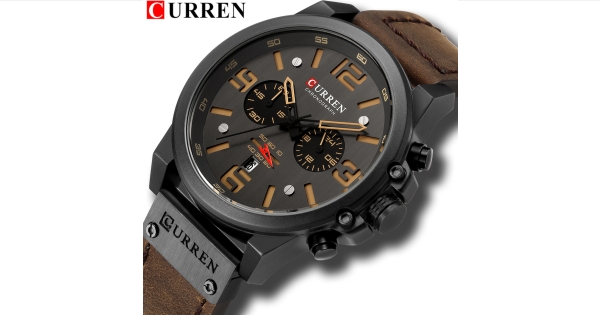
AliExpress
USD 16.95 8% CURREN Mens Watches Top Luxury Brand Waterproof Sport Wrist Watch Chronograph Quartz Military Genuine Leather Relogio Masculino
https://s.click.aliexpress.com/e/_Ez2FuCvUSD 15.54 100% POEDAGAR Men Quartz Watch Luxury Sports Waterproof Chronograph Luminous Date Man Wristwatch Business Leather Men's Watches Clock
https://s.click.aliexpress...
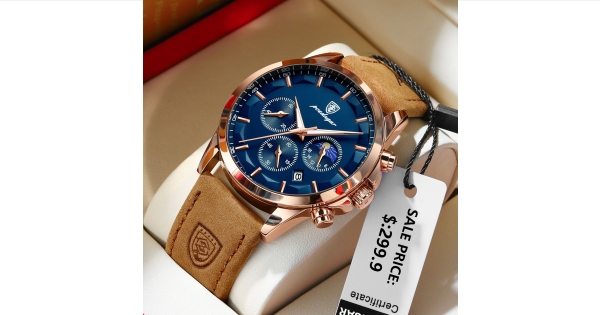
AliExpress
USD 15.54 100% POEDAGAR Men Quartz Watch Luxury Sports Waterproof Chronograph Luminous Date Man Wristwatch Business Leather Men's Watches Clock
https://s.click.aliexpress.com/e/_EvXpN6ZUSD 18.71 47% CURREN Top Brand Men's Watches Luxury Square Quartz Wristwatch Waterproof Luminous Chronograph Watch for Men Date Clock
https://s.click.aliexpress...

AliExpress
USD 18.71 47% CURREN Top Brand Men's Watches Luxury Square Quartz Wristwatch Waterproof Luminous Chronograph Watch for Men Date Clock
https://s.click.aliexpress.com/e/_Ewg15c9USD 25.82 44% LIGE Men Watches Automatic Mechanical Watch Tourbillon Clock Genuine Leather Waterproof Watch Men Military Wristwatch Man
https://s.click.aliexpress...

AliExpress
USD 25.82 44% LIGE Men Watches Automatic Mechanical Watch Tourbillon Clock Genuine Leather Waterproof Watch Men Military Wristwatch Man
https://s.click.aliexpress.com/e/_EuMoeOHUSD 14.91 9% POEDAGAR Luxury Sport Wrist Watch For Man Waterproof Luminous Date Men Watch Quartz Stainless Steel Men's Watches Male Reloj+box
https://s.click.aliexpress...
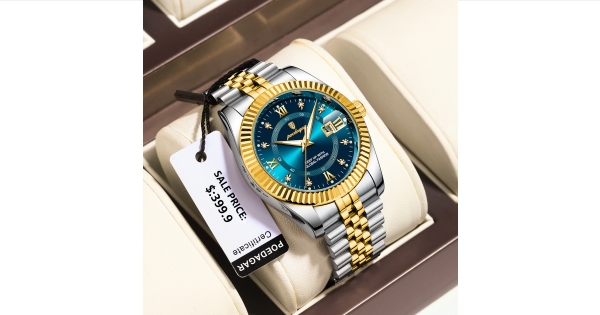
AliExpress
USD 14.91 9% POEDAGAR Luxury Sport Wrist Watch For Man Waterproof Luminous Date Men Watch Quartz Stainless Steel Men's Watches Male Reloj+box
https://s.click.aliexpress.com/e/_EwDmqMhUSD 70.71 51% PAGANI DESIGN Brand Sports Men Mechanical Watch Fashion Sapphire 200M Waterproof Automatic Timecode Relogio Masculino 2024 New
https://s.click.aliexpress...
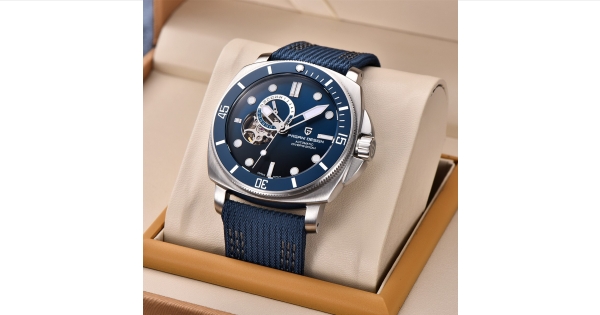
AliExpress
USD 70.71 51% PAGANI DESIGN Brand Sports Men Mechanical Watch Fashion Sapphire 200M Waterproof Automatic Timecode Relogio Masculino 2024 New
https://s.click.aliexpress.com/e/_EGcQwVTUSD 54.07 50% PAGANI DESIGN 2024 New Men Watches Quartz Business Watch Mens Watches Top Brand Luxury Watch Men Chronograph VK63
https://s.click.aliexpress...

AliExpress
USD 54.07 50% PAGANI DESIGN 2024 New Men Watches Quartz Business Watch Mens Watches Top Brand Luxury Watch Men Chronograph VK63
https://s.click.aliexpress.com/e/_EvJYMvTUSD 15.94 97% POEDAGAR Luxury Watch For Man Waterproof Luminous Date Week Stainless Steel Men Watch Casual Quartz Men's Watches Male Clock+box
https://s.click.aliexpress...

AliExpress
USD 15.94 97% POEDAGAR Luxury Watch For Man Waterproof Luminous Date Week Stainless Steel Men Watch Casual Quartz Men's Watches Male Clock+box
https://s.click.aliexpress.com/e/_EvxGRyNUSD 68.17 51% PAGANI DESIGN Men Mechanical Watch Luxury Automatic Watch Sport Stainless Steel 100M Waterproof Watch for Men
https://s.click.aliexpress...
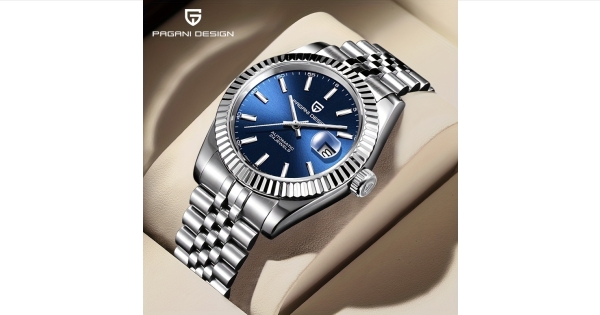
AliExpress
USD 68.17 51% PAGANI DESIGN Men Mechanical Watch Luxury Automatic Watch Sport Stainless Steel 100M Waterproof Watch for Men
https://s.click.aliexpress.com/e/_ExA7OUtUSD 19.55 6% OLEVS Men's Watches Classic Multifunctional Fltwheel Chronograph Original Quartz Wristwatch Moon Phase 24 Hour Waterproof reloj
https://s.click.aliexpress...

AliExpress
USD 19.55 6% OLEVS Men's Watches Classic Multifunctional Fltwheel Chronograph Original Quartz Wristwatch Moon Phase 24 Hour Waterproof reloj
https://s.click.aliexpress.com/e/_Ev2G36vUSD 18.28 37% Winner Mechanical Sport Design Bezel Fashion Watch Mens Watches Top Brand Luxury Montre Homme Clock Men Automatic Skeleton Watch
https://s.click.aliexpress...

AliExpress
USD 18.28 37% Winner Mechanical Sport Design Bezel Fashion Watch Mens Watches Top Brand Luxury Montre Homme Clock Men Automatic Skeleton Watch
https://s.click.aliexpress.com/e/_ExqASRJ











